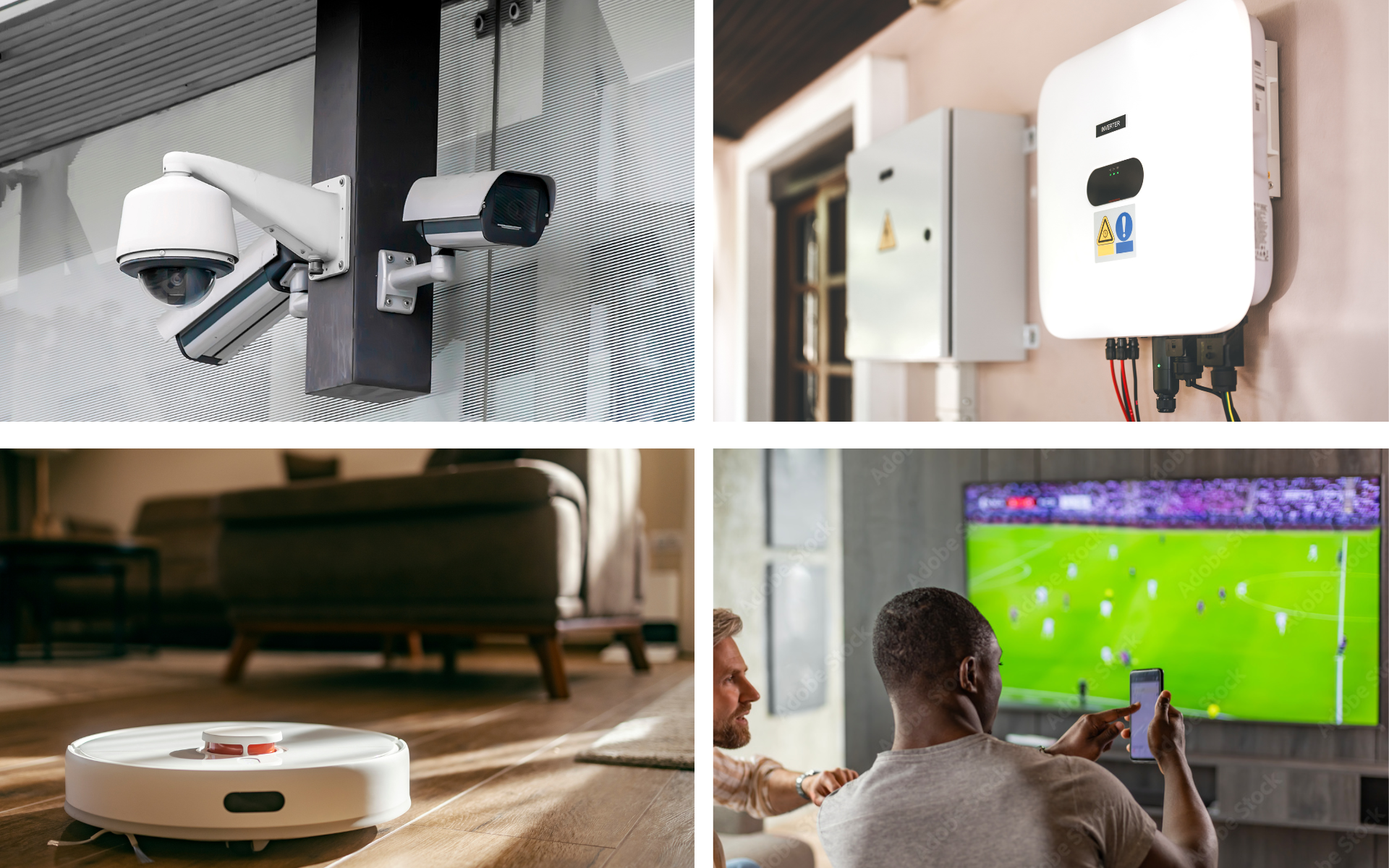Australia to roll out cybersecurity labels for smart home devices
Your home may be smarter than you think — and more vulnerable, too.
The average household now boasts over 30 Internet of Things (IoT) devices, from smart TVs and video doorbells to robot vacuums, cameras, and solar panel inverters.
But while these gadgets bring convenience and connectivity, their links to the internet can also open the door to serious cybersecurity risks.
IoT Alliance Australia (IoTAA) has won a federal government contract to deliver a security labelling scheme which will make it easier for Australians to choose safer, more secure smart devices. The NSSN is a key supporter of this program.
“Raising consumer awareness about smart device security is an important first step in reducing cyber risk,” IoTAA Chair Judy Anderson said.
“It’s also a great opportunity for manufacturers to take the lead in raising security for all of us.”
(Clockwise from top left) Internet of Things (IoT) devices such as security cameras, solar panel inverters, smart TVs and robot vacuums can open the door to serious cybersecurity risks. Credit: AdobeStock
Backed by its industry partners and the wider IoT ecosystem, the IoTAA will lead the co-design and rollout of an internationally aligned, industry-led voluntary labelling scheme for consumer-grade smart devices.
The 18-month program, scheduled for completion by March 2027, aims to help consumers make informed choices about the security of smart devices before purchase, while encouraging manufacturers to adopt stronger security measures.
Several universities including NSSN members UNSW School of Computer Science and Engineering and UTS Faculty of Law will be contributing the IoTAA’s expertise.
The NSSN will also play a role in identifying areas where further cybersecurity risk research will be required.
“Cyber security risk for common household IoT devices can be very complex,” NSSN Natural Hazards & Smart Places Theme Lead Peter Runcie said.
“The aim of this initiative is to distil that complexity into an intuitive label that consumers can use to make wise buying decisions at the point of sale.”
The scheme will display a clear security label on devices, giving buyers an understanding of the product’s cybersecurity safeguards.
For manufacturers, it offers a credible way to showcase their security credentials and build consumer trust.
“Australians need to be able to trust that the devices they bring into their homes won’t compromise their safety,” Minister for Cyber Security, Hon Tony Burke said.
“Whether it’s a smart speaker or robot vacuum cleaner, consumers will know how safe a product is before they buy it.
“The program will also put pressure on manufacturers because they will know cyber security has a value to Australian consumers.”
The co-design will involve input from consumer groups, manufacturers, distributers and international industry bodies.
The scheme is part of the Federal Government’s 2023 – 2030 Australian Cyber Security Strategy.
The Department of Home Affairs and IoTAA will host a briefing session at 10 am – 11 am on Tuesday 26 August (online via MS Teams). The aim of this session is to provide an overview of the scheme’s objectives and how it will be developed.
To get involved:
1. Register to attend the briefing on Tuesday 26 August 10 – 11 am.
2. Register your interest in participating in future consultative activities or to be kept informed on progress.
If you have any questions, email labellingscheme@iot.org.au.

